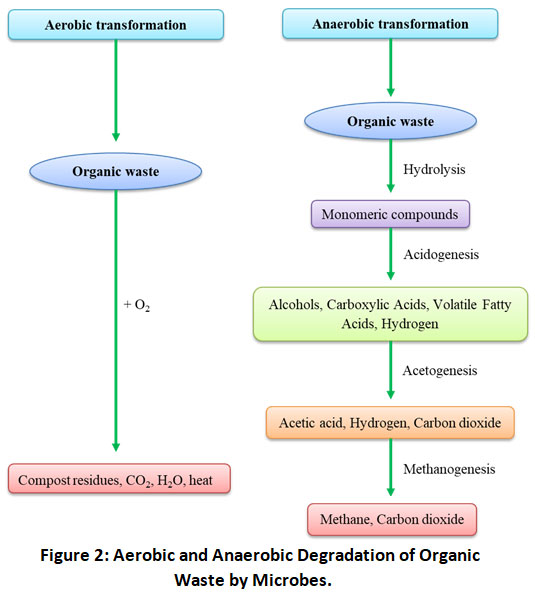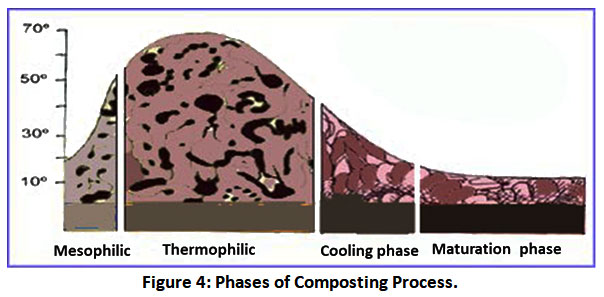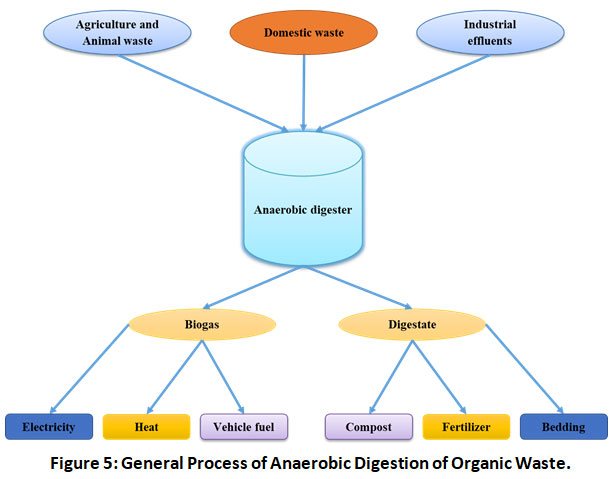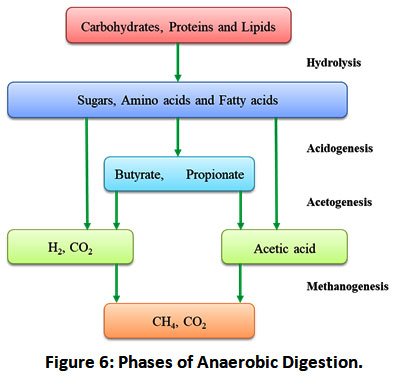Microbes as Requisite Additives for Organic Waste Management: A Brief Review
Shahnawaz Hassan * and Sabreena
Corresponding author Email: shahnawazhassan89@gmail.com
DOI: http://dx.doi.org/10.12944/CWE.17.1.4
Copy the following to cite this article:
Hassan S, Sabreena S. Microbes as Requisite Additives for Organic Waste Management: A Brief Review. Curr World Environ 2022;17(1). DOI:http://dx.doi.org/10.12944/CWE.17.1.4
Copy the following to cite this URL:
Hassan S, Sabreena S. Microbes as Requisite Additives for Organic Waste Management: A Brief Review. Curr World Environ 2022;17(1). Available From:
Download article (pdf) Citation Manager Publish History
Select type of program for download
| Endnote EndNote format (Mac & Win) | |
| Reference Manager Ris format (Win only) | |
| Procite Ris format (Win only) | |
| Medlars Format | |
| RefWorks Format RefWorks format (Mac & Win) | |
| BibTex Format BibTex format (Mac & Win) |
Article Publishing History
| Received: | 19-04-2021 |
|---|---|
| Accepted: | 19-09-2021 |
| Reviewed by: | 
 Y. Vasudeva Rao
Y. Vasudeva Rao
|
| Second Review by: |

 Bala Kumaran
Bala Kumaran
|
| Final Approval by: | Dr. Gopal Krishan |
Introduction
The current waste management practices face challenges owing to a huge generation of greenhouse gases GHGs that has contributed to changes in consumption patterns and growth in resource squandering mainly caused by the rapid industrialization, urbanization and population growth 1,2. The old saying“Waste not, want not” rings so true today as global leaders and local communities alike progressively call for a fix for the so called “throwaway culture”. Waste management is a universal issue that is not only linked to individuals and households in a broader way but also affects human well-being and environmental prosperity3. As the waste is openly dumped or burned (about 90%) in underdeveloped countries due to a lack of sustainable waste management policy,it is underprivileged and most vulnerable populations that are disproportionately affected 4.
It is not only the underdeveloped countries that are affected by unmanaged waste, developed countries that are chief contributors of solid waste mess are severely impacted too. Poorly managed waste is seriously deteriorating the health of world’s ocean, transmitting diseases, clogging drains and causing floods thereby hinders economic growth, hurts the environment and human welfare5
The rate of waste generation is swelling progressively as almost 201 billion tonnes of municipal solid waste(MSW) is produced annually worldwide with 33% of it is not managed in an environmental friendly manner(World Bank’s ‘what a waste 2.0’ report 2018). It is estimated that due to rapid urbanization and population pressure, global waste will increase by 70% to about 340 billion tonnes annually. India contributes around 50 million tonnes of MSW every year 6.
Organic waste being the largest component of MSW in developing countries consists of farmyard wastes, food and agro-industrial wastes 7. Organic wastes abundant in organic fraction, can be transformed into renewable biogas and composted under controlled conditions by microorganisms 8. Microorganisms having impressive metabolic ability are widely distributed on the biosphere, growing in wide range of environmental conditions. Their nutritional versatility can be exploited for the biodegradation of organic waste. Microorganisms are considered as the principle agents which can clean and alter the complex lipophilic organic molecules which are considered recalcitrant to simple water-soluble products. Microorganisms that carry out biodegradation of organic waste includeAcinethobacter,Actinobacteria, Alcaligenes, Anthrobacter, Bacillus, Flavobacterium, Mycobacterium, Pencillium, Pseudomonas, Xanthfacter, Nocardia, Serratio etc. Mankind has encountered several problems in maintaining the quality of environment, and microorganism can be invaluable in finding solutions for several problems. The greatest advantage of utilizing microbes for organic matter degradation is that these techniques are practicable and economical it would have been unfeasible to employ physical/ chemical methods 9
Techniques like bioremediation and biotransformation are used in microbial degradation to bind the innate proficiency of microbial metabolism to break down, transmute or accrue environmental pollutants. In recent years the utilization of microorganisms for organic matter degradation has grown tremendously over the years. This expeditious increase in such research has been facilitated by the omics approach (genomics, metagenomic, proteomic, bioinformatic) that has provide high throughput analysis of environmentally relevant microorganisms 10. This has enormously helped the scientific community to get new insights about the biodegradative pathways of microbes; and their ability to adapt in fluctuating environmental settings.
The objective of this review is to prompt the application or role of microorganisms in the management of organic waste. It is emerging as an area of interest for researchers across the globe to find the solutions to environmental threats posed by solid waste.
Principles of Microbial Degradation
Microorganisms utilize carbon, hydrogen, oxygen and nitrogen and the organic contaminants for their growth11. Two categories of transformations exist.
- The first step in microbial degradation is growth linked as microbes utilize organic compound such as carbon and energy to support growth and the development process.
- The second step involves the microbes utilizing respirational carbon in order to maintain their cell viability. Cometabolism is another phenomenon that involves the simultaneous degradation of two compounds also falls in second category12. Cometabolism is an essential exertion that has been utilized for organic waste degradation for more than twenty years. Such as approach is being used to degrade the hazardous solvents(PCE, TCE and MTBE)as these have harmful effects on the environment13. Such compounds are metabolically degraded by bacteria (Fig. 1)
 |
Figure 1: Growth and Cometabolism: Utilization of Waste by Microbes. Click here to view Figure |
Factors Affecting Microbial Degradation
Microorganisms can reduce various organic wastes owing to their metabolic machinery and capability to acclimatize to hostile environs. However, their efficacy hinges on several dynamics including the chemical nature and concentration of wastes, their accessibility to microorganisms and the physicochemical characteristics of the environment14.
Biological Factors
Microbial transmutation is executed by numerous biotic factors that impact the rate of organic waste degradation via organism enzyme inhibition activities and proliferation rate15. Competition among the organisms for limited carbon sources prompts enzymatic inhibition causing antagonistic or predatory interactions. Similarly, the degradation capability of organisms is facilitated by environmental contaminant concentration and catalyst activity that ultimately impact the rate of organic waste degradation. Factors like enzyme specificity, affinity and contaminant availability affect the rate of metabolism. To prevent the exponential and uncontrolled growth of microbes, proper and apt concentration of oxygen and nutrients should be supplemented by adequate conditions of temperature, pH and moisture content15. Temperature is an imperative feature that affect the metabolic action of organisms as for each 10?C decline in temperature, the degree of organic matter degradation decrease roughly to about one-half. Similarly, pH of 6.5 to 8.5 is an important indicator for organic matter degradation in most terrestrial systems. The degree of pollutant metabolism is influenced by moisture too as it affects the nature and concentration of available material in aquatic systems16.
Environmental Factors
The adsorption and absorption of organic compound is highly influenced by the soil type and its OM content. These processes are not only vital to diminish the accessibility of the contaminant to varied type of microorganisms but also impact the metabolism rate of contaminant that is proportionally declined (Environmental Response Division, 1998). The oxidizing property of the soil gives the measure of electron density as Eh value >50mV indicates oxygen facilitated conditions while Eh value<50mV indicates reducing and anaerobic conditions 17
The desired degradation of the waste depends on the degradation reactions to which the compounds of interest will be subjected involving metabolism pathway and the mode of process. The modes of these degradation processes are classified as aerobic and anaerobic (Fig.2.)
- Aerobic transformation of organic waste occurs in presence of oxygen where the molecular oxygen serves as electron receptor. This process utilizes microbes such as bacteria and fungi that transform carbon into energy and produces carbon dioxide, water and humus as waste products.
- Anaerobic degradation reactions of organic waste take place in absence of molecular oxygen involving anaerobic respiration and fermentation. Such degradation starts with hydrolysis of input material process initiated by bacteria in order to halt down insoluble organic polymers such as carbohydrates and make them accessible for bacteria. Carbohydrates and amino acids formed in hydrolysis process are converted into CO2, NH3 and organic acids by acidogenic bacteria. The resulting organic acids are transformed into acetic acid as well as additional ammonia, H2O and CO2. Finally methanogens transform these products to CH4 and CO2.
 |
Figure 2: Aerobic and Anaerobic Degradation of Organic Waste by Microbes. Click here to view Figure |
Aerobic Degradation of Organic Waste
- Under Aerobic Conditions, Composting Process is Done by the exothermic reaction, producing energy in the form of heat that ultimately raises the temperature prompting degradation of organic waste (thermic phase) producing CO2& H2O. Such a microbially driven process generates stabilized organic matter with high humic acid content (Fig.3). Composting, as an option for organic waste transformation, lessens the phytotoxicity and expands the hygienic prominence of non-stabilizedOM 18 that is beneficial to soils and plants 5, 19 (Fig.3). The process of composting involves four phases (Fig. 4).
 |
Figure 3: Composting Process of Organic Waste. Click here to view Figure |
Mesophilic Phase (25-40?C)
In Mesophilic phase of organic waste degradation, sugars and proteins that are energy-rich compounds are transformed by bacteria and fungi. These decomposers compete with each other for readily accessible substratum. As specific growth rates of bacteria surpass in magnitude as compared to fungi, these act as catalysts paving the ways for the mechanical transformation of organic waste20.
Thermophilic Phase (35 – 65?C)
The advantage of withstanding high temperatures enhances the capability of thermophilic bacteria that out-compete the Mesophilic microbiota as high temperatures inactivate the degradation action of Mesophilic bacteria. The rate of degradation by thermophilic bacteria is boosted and accelerated up to a temperature of about 62?C. About 40% of the solid portions of organic waste are degraded entirely through the bacterial medium 21. A temperature between 50 to 65?C is highly optimized temperature for the genus Bacillus. At about 65?C and greater, the thermophilic process is overtaken by Bacillus. stearothermophilus. However,the most suitable temperature where all the pathogens and harmful bacteria in waste stream are eliminated and thermophilic enzyme is activated to shorten the fermentation time is 70-80?C. During the thermophilic mode of organic waste degradation, complex organic waste is digested, resulting in high-quality fertilizer, free of odour and pathogens.
Cooling Phase (Second Mesophilic Phase)
When the substrates available for the thermophilic bacteria are reduced or halted owing to their activity, temperature decrease occursSuch process is enhanced by number of microorganisms(Cellulomonas, Clostridium and Nocardia, Aspergillus, Fusarium andPaecilomyces)that cause starch and cellulose degradation (Ryckeboer et al. 2003).
Maturation and Curing Phase
The eminence of substrate diminutes during the maturation phase thereby entirely altering the microbial community composition. Owing to competitive advantage, the fungi to bacteria ratio upsurges due to diminishing water potential and lesser substrate accessibility. Compounds (lignin–humus complexes) that are not further degradable become highly dominant. In curing phase of organic waste degradation, Physico-chemical parameters are not altered but microbial community changes do still occur 22. Organisms (Mycobacteria and Verrucomicrobia)tangled in macromolecule degradation begin to preponderate.
 |
Figure 4: Phases of Composting Process. Click here to view Figure |
Anaerobic Degradation
Anaerobic process for organic waste degradation is a reduction process involving a series of biochemical reactions (Fig.5) occurring under anoxic conditions 23. Such a process involves four different steps(Fig.6), hydrolysis, Acidogenesis, Acetogenesis and Methanogenesis. The rate limiting step in anaerobic digestion is hydrolysis whichcauses failure under enacted kinetic process 23, resulting in washing out of microorganisms 24. There are diverse views regarding the rate limiting step in anaerobic degradation of organic waste. For complex organic substrate, most of the investigation has reported that hydrolysis process is a rate limiting step 22, 25, 26. For the easily biodegradable substrates, Methanogenesis is the rate limiting step 27. Various factors such as physiology, nutritional needs, growth kinetics and sensitivity to the environment, influence the anaerobic degradation of organic waste. A delicate balance between acid forming and methane forming microorganisms can sometimes be an obstacle, prompting reactor instability and low methane production 28. The separation of microorganisms is based on differences in growth kinetics accomplished through membrane separation, kinetics and pH control 29,30.
 |
Figure 5: General Process of Anaerobic Digestion of Organic Waste. Click here to view Figure |
Hydrolysis
Hydrolysis is an enzyme facilitated alteration where greater molecular mass (lipids, polysaccharides, proteins, and nucleic acids) are transformed into simpler molecules. This process of organic waste is mediated by anaerobes (Bacteriodes, Clostridia) and facultative bacteria (Streptococci)31. The microorganisms secrete different extracellular enzymes that break down the complex compounds in order to take them up into the cell for use as a cradle of energy and nutrition. Different enzymes produced by microorganisms prompt the degradation of varied types of organic waste materials. The decomposition rate of organic waste is controlled by the nature of the substrate for example the degradation of cellulose and hemicellulose is slower in comparison to proteins during the hydrolysis process 24.
Acidogenesis
During the Acidogenesis phase, monomeric compounds are taken up by the cells for the process of fermentation under the influence of electron donors accompanied by the bacteria (Clostridium, Streptococcus and Lactobacillus)generating lactate, Butyrate, Propionate and ethanol, plus CO2 and molecular hydrogen32. The process of fermentation can be accompanied through Stickland coupled deamination and deamination of a single amino acid in the occurrence of a H2- scavenging partner33.
Acetogenesis
Acetogenesis is accomplished by the oxidation of fermentation products to produce acetate, formate, hydrogen and carbon dioxide. The acetogenic process involving Acetogenic bacteria can be thermodynamically unstable requiring a syntrophic association between acetogen and hydrogen 34. Such syntrophism is obligatory and biochemical energetics involved in such association has been investigated 34.
The process of Acetogenesis forms the substrate for the Methanogenesis process, however, due to the competition among/between few anaerobes and methanogens, sharing the substrate can diminish the proficiency of methane production22. These include bacteria likeDesulfotomaculum, Desulfobulbus, Deferribacter, hydrogenogenic Carboxydocella and Thermosinus35 that outcompete methanogens owing to an inhibition of numerous microbiota 36 and lowering partial pressure37.
Methanogenesis
Anaerobic degradation of organic waste in the Methanogenesis process involves the generation of methane accomplished by Achaea belonging to the phylum Euryarchaeota38. In anaerobic reactors, methane-forming organisms commonly found include Methanobacterials, Methanococcales, Methanomicrobials and Methanosarcinales. These organisms most frequently utilize hydrogen as an electron donor, however formate or secondary alcohols can also be an option39,40
 |
Figure 6: Phases of Anaerobic Digestion. Click here to view Figure |
Conclusion
Organic waste should be seen as a treasured entity and not as a cradle of environmental effluence that can simply be put into landfills or incinerators, but can be transmuted into marketable harvests generating sufficient employment and profits. For degradation of organic waste, priorities like sustainable processing of organic waste and its utility as a resource can be optimized by harnessing innovative technologies (Fig.7). This will improve the quality of life by being in line with the principles of sustainable development closely linked with poverty alleviation goals. Furthermore, microbes are proven to augment the degradation process that provide an alternative solution to waste management, as chemical and thermal methods are not favored in terms of cost, energy consumption and environmental prosperity. The most reliable strategy for degradation of organic waste is biodegradation by eco-friendly microbes. This has been widely accepted as an environmentally sound and economically feasible resource for treatment of solid waste and effluents. Hence microbes are a prerequisite for clean environment.
 |
Figure 7: Flowchart of a Green and Productive Community. Click here to view Figure |
Declarations
The authors declare that there is no conflict of interest in this study.
Authors’ Contributions
Shahnawaz Hassan, Muzafar Zaman, Aarif Yaseen and Sabreena led the development and design of the manuscript. All authors read and approved the final manuscript.
Funding Source
The author(s) received no financial support for the research, authorship, and/or publication of this article.
Acknowledgment
The authors thank Mohammad Jalil for providing necessary guidance which together could make the present study possible.
Data Availability Statement (DAS)
Data sharing is not applicable to this article as no new data were created or analysed in this study.
References
- Oberle B, Bringezu S, Hatfield-Dodds S, et al. Global resources outlook 2019: Natural resources for the future we want. 2019;
- Panel IR, Consumption UNEPS, Branch P. Decoupling natural resource use and environmental impacts from economic growth. UNEP/Earthprint; 2011.
- Kaza S, Yao L, Bhada-Tata P, Van Woerden F. What a waste 2.0: a global snapshot of solid waste management to 2050. World Bank Publications; 2018.
- Victoire A, Martin NV, Abias M, Pacifique U, Claude MJ. Solid Waste Management Challenges and Its Impacts on People’s Livelihood, Case of Kinyinya in Kigali City. Journal of Geoscience and Environment Protection. 2020;8(06):82.
- Islam MA, Rahman MA, Sakib A-N. A Waste Recycling System for a Better Living World. IEEE; 2020:171-176.
- Sarkar S, Pal S, Chanda S. Optimization of a vegetable waste composting process with a significant thermophilic phase. Procedia Environmental Sciences. 2016;35:435-440.
- Lohri CR, Diener S, Zabaleta I, Mertenat A, Zurbrügg C. Treatment technologies for urban solid biowaste to create value products: a review with focus on low-and middle-income settings. Reviews in Environmental Science and Bio/Technology. 2017;16(1):81-130.
- Li K, Wang K, Wang J, et al. Performance assessment and metagenomic analysis of full-scale innovative two-stage anaerobic digestion biogas plant for food wastes treatment. Journal of Cleaner Production. 2020;264:121646.
- Bhatt AK, Bhatia RK, Thakur S, Rana N, Sharma V, Rathour RK. Fuel from waste: a review on scientific solution for waste management and environment conservation. Prospects of Alternative Transportation Fuels. 2018:205-233.
- Karigar CS, Rao SS. Role of microbial enzymes in the bioremediation of pollutants: a review. Enzyme research. 2011;2011.
- Bender J, Phillips P. Microbial mats for multiple applications in aquaculture and bioremediation. Bioresource Technology. 2004;94(3):229-238.
- Kumar A, Bisht B, Joshi V, Dhewa T. Review on bioremediation of polluted environment:: A management tool. International journal of environmental sciences. 2011;1(6):1079.
- Nzila A. Update on the cometabolism of organic pollutants by bacteria. Environmental Pollution. 2013;178:474-482.
- El Fantroussi S, Agathos SN. Is bioaugmentation a feasible strategy for pollutant removal and site remediation? Current opinion in microbiology. 2005;8(3):268-275.
- Joutey NT, Bahafid W, Sayel H, El Ghachtouli N. Biodegradation: involved microorganisms and genetically engineered microorganisms. Biodegradation-life of science. 2013:289-320.
- Abatenh E, Gizaw B, Tsegaye Z, Wassie M. The role of microorganisms in bioremediation-A review. Open Journal of Environmental Biology. 2017;2(1):038-046.
- Davis L. 1998 Annual Report-Environmental Restoration Division. 1998.
- Sunar N, Stentiford E, Stewart D, Fletcher L. The process and pathogen behavior in composting: a review. arXiv preprint arXiv:14045210. 2014;
- Knapp BA, Ros M, Insam H. Do composts affect the soil microbial community? Microbes at work. Springer; 2010:271-291.
- Griffin LP. Anaerobic digestion of organic wastes: the impact of operating conditions on hydrolysis efficiency and microbial community composition. Colorado State University; 2012.
- Strom PF. Identification of thermophilic bacteria in solid-waste composting. Applied and environmental microbiology. 1985;50(4):906-913.
- Insam H, Franke-Whittle I, Goberna M. Microbes in aerobic and anaerobic waste treatment. Microbes at work. Springer; 2010:1-34.
- Aslanzadeh S, Rajendran K, Taherzadeh MJ. A comparative study between single-and two-stage anaerobic digestion processes: Effects of organic loading rate and hydraulic retention time. International Biodeterioration & Biodegradation. 2014;95:181-188.
- Adekunle KF, Okolie JA. A review of biochemical process of anaerobic digestion. Advances in Bioscience and Biotechnology. 2015;6(03):205.
- Ariunbaatar J, Panico A, Esposito G, Pirozzi F, Lens PN. Pretreatment methods to enhance anaerobic digestion of organic solid waste. Applied energy. 2014;123:143-156.
- Koupaie EH, Dahadha S, Lakeh AB, Azizi A, Elbeshbishy E. Enzymatic pretreatment of lignocellulosic biomass for enhanced biomethane production-A review. Journal of environmental management. 2019;233:774-784.
- Esposito G, Frunzo L, Giordano A, Liotta F, Panico A, Pirozzi F. Anaerobic co-digestion of organic wastes. Reviews in Environmental Science and Bio/Technology. 2012;11(4):325-341.
- Zuo Z, Wu S, Zhang W, Dong R. Effects of organic loading rate and effluent recirculation on the performance of two-stage anaerobic digestion of vegetable waste. Bioresource technology. 2013;146:556-561.
- Fernandes LF. The effects of surface to volume ratio on aerobic digestion at low temperature. 1986.
- Ince O. Performance of a two-phase anaerobic digestion system when treating dairy wastewater. Water research. 1998;32(9):2707-2713.
- Christy PM, Gopinath L, Divya D. A review on anaerobic decomposition and enhancement of biogas production through enzymes and microorganisms. Renewable and Sustainable Energy Reviews. 2014;34:167-173.
- Yazdani SS, Gonzalez R. Anaerobic fermentation of glycerol: a path to economic viability for the biofuels industry. Current opinion in biotechnology. 2007;18(3):213-219.
- Ramsay IR, Pullammanappallil PC. Protein degradation during anaerobic wastewater treatment: derivation of stoichiometry. Biodegradation. 2001;12(4):247-256.
- Leng L, Yang P, Singh S, et al. A review on the bioenergetics of anaerobic microbial metabolism close to the thermodynamic limits and its implications for digestion applications. Bioresource technology. 2018;247:1095-1106.
- Barton LL, Fauque GD. Biochemistry, physiology and biotechnology of sulfate?reducing bacteria. Advances in applied microbiology. 2009;68:41-98.
- O’Flaherty V, Collins G, Mahony T. The microbiology and biochemistry of anaerobic bioreactors with relevance to domestic sewage treatment. Reviews in Environmental Science and Bio/Technology. 2006;5(1):39-55.
- Sokolova TG, Jeanthon C, Kostrikina NA, et al. The first evidence of anaerobic CO oxidation coupled with H 2 production by a hyperthermophilic archaeon isolated from a deep-sea hydrothermal vent. Extremophiles. 2004;8(4):317-323.
- Briones A, Raskin L. Diversity and dynamics of microbial communities in engineered environments and their implications for process stability. Current opinion in biotechnology. 2003;14(3):270-276.
- Angelidaki I, Karakashev D, Batstone DJ, Plugge CM, Stams AJ. Biomethanation and its potential. Methods in enzymology. 2011;494:327-351.
- Song M, Shin SG, Hwang S. Methanogenic population dynamics assessed by real-time quantitative PCR in sludge granule in upflow anaerobic sludge blanket treating swine wastewater. Bioresource Technology. 2010;101(1):S23-S28.







